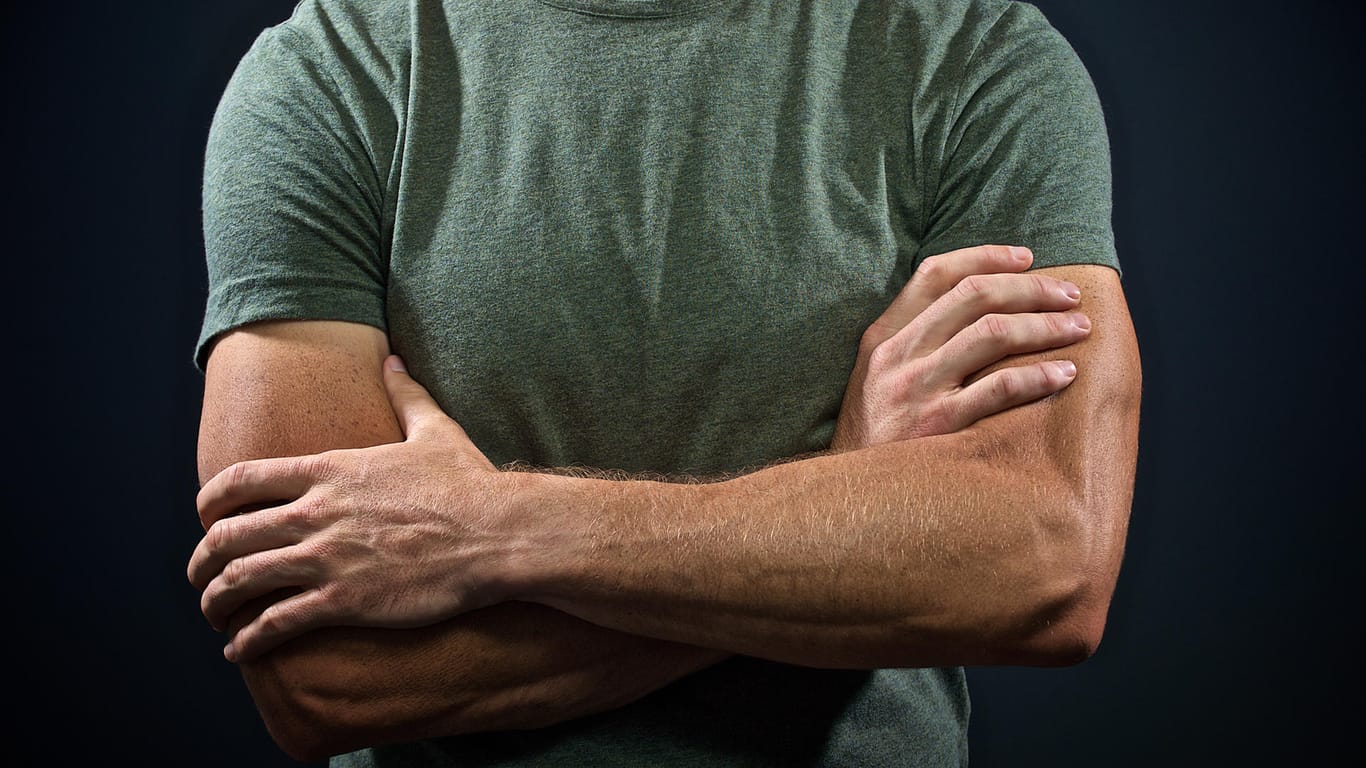Chest muscles of different sizes plague many men. How common is this problem, how can it happen and what can be done about it? WANTED.DE asked a sports expert for advice.
Maybe you should now stand in front of the mirror and examine your body in detail: Is one breast perhaps bigger than the other? Isn’t this actually a women’s problem? Not at all! As a look at various fitness forums shows, many men are concerned with the ratio of their chest muscles, especially when it comes to building muscle.
Beware of lay advice!
But don’t accept the help of non-professionals – what is written here is often not medically based. “The answers in forums are usually rather amateurish, very often trivial to completely inadequate and are almost exclusively in the area of myths and card reading,” warns Jürgen Pagel, President of the Federal Association of Personal Training (BPT) eV. The physiotherapist and lecturer points out that the topic does not play a major role in training science. However, he has some explanations.
One-sided movements are often the reason
Even if there are no official figures or large scientific studies on this topic, the problem remains for the individual man – it can even put a strain on the psyche if the person concerned suffers greatly from the sight of his uneven chest muscles. Pagel got to the bottom of the matter and ruled out the possibility that there were hormonal or growth-related disorders. “This is most likely a so-called predilection of the muscles, which tends to develop differently depending on everyday habits and daily challenges.” Unilateral movement sequences in which one side or one arm is preferred promotes the chest muscles to develop differently.
Imprinting of muscle fibers begins during puberty
To be even more precise: The unequal pectoral muscles arise from the different degrees of development of muscle fiber types I to II a/b, which are particularly pronounced during puberty. The sports expert continues: “The foundation for the formation of muscle fibers is laid until around the age of 14. If this time passes without using the white (so-called ‘Fast Switch Fibers’) muscle fibers, these are reinforced into red fibers (‘Slow Switch Fibers’). There is no going back.”
Anyone who spends too much time in sitting and lying positions during this important formative phase, carries out a lot of one-sided actions and prefers arm movements on one side must expect that the muscle fibers will develop differently and this will later lead to uneven chest muscles. This one-sided expression becomes obvious in later years, especially with intensive training.
Train as evenly as possible
At least, according to Pagel, no health consequences are to be expected. So you don’t necessarily have to do anything about uneven chest muscles.
But what to do if the uneven appearance bothers you? “There are no special exercises, nor is there a generalization of the topic,” says Pagel. Basically, he recommends training as evenly as possible for balanced muscle building and dumbbell training with correct execution on the same sides.
A lot or a little weight?
What doesn’t help you is the tactic known in experts as hypertrophy training – training that only aims to build muscle. Because all muscle fibers should be trained for functionality. The expert continues: “The entire scope of training should include fast-strengthening exercises with high weight (up to 85 percent of maximum strength) as well as slow movements with relatively low weight (maximum 70 percent of maximum strength).”
Training not just with weights
For holistic training and consistent muscle building, you need more than just weights. Pagel explains that highly functional exercises, such as all variations of push-ups and side supports, are particularly important. It is important to carry out movements that support the pectoralis major and minor muscles in the shoulder joint – namely during adduction (pulling the arms and feet towards the body), internal rotation and elevation (lifting ). “This is only possible to a limited extent with weights, which is why exercises with your own body weight should be implemented for completeness,” says the expert.If you specifically want to do something about uneven chest muscles, it can be helpful to revise your own training program with an expert personal trainer . This will ensure that you do not worsen the visual effect by placing a load on one side.

